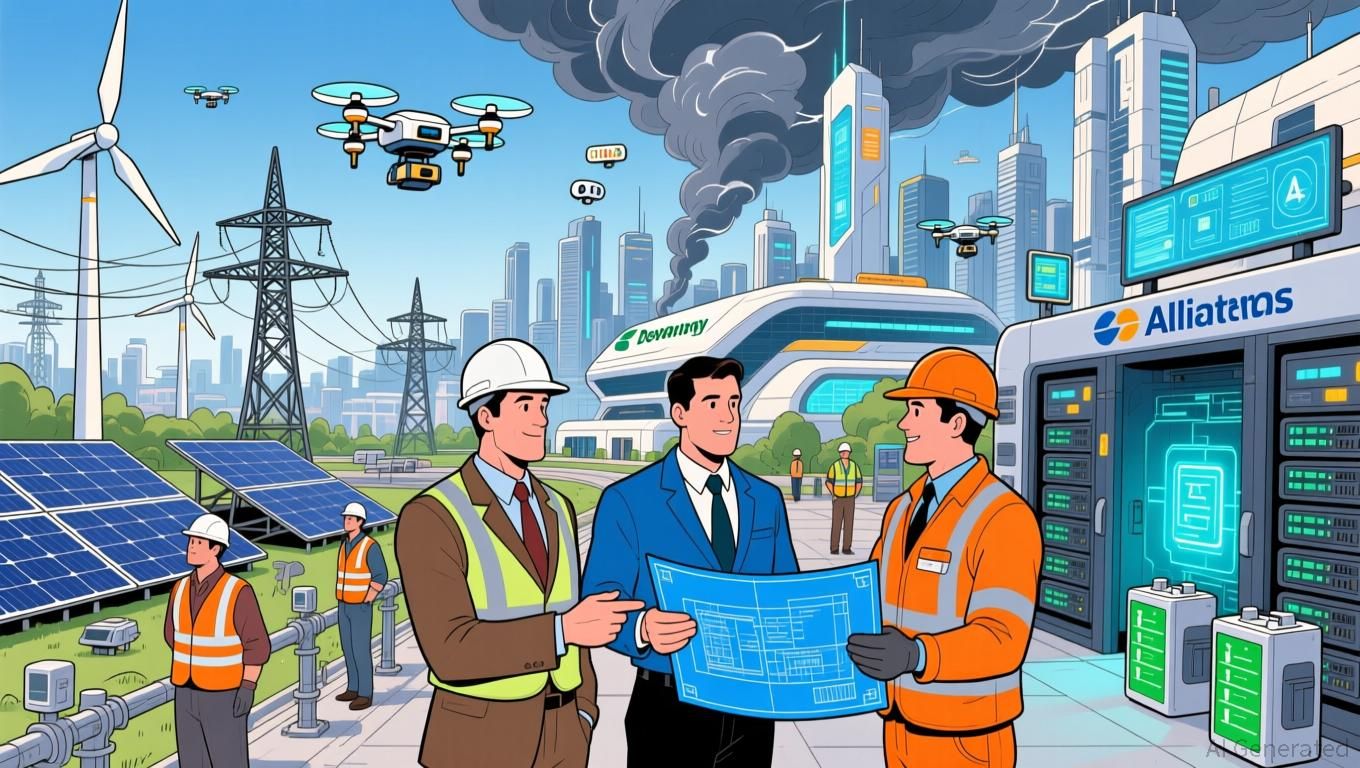AI's Growing Demand for Power Pushes the Energy Industry Into an Intense Sustainability Competition
- Energy and tech sectors collaborate to address AI's surging energy demands through sustainable computing infrastructure and efficient GPU solutions. - Devon Energy and Alliant Energy boost capital spending on grid modernization and storage, aligning with AI-driven power needs while maintaining shareholder returns. - NVIDIA advances open-source GPU efficiency via Nova driver, yet faces market volatility as AI sector grapples with financial risks and regulatory pressures. - Industry challenges include bala
The drive to create more energy-efficient computing systems is gaining momentum as technology and energy industries join forces to address the rapidly increasing needs of artificial intelligence. As AI-related tasks fuel a dramatic rise in data center power usage, businesses are increasingly turning to sustainable methods to support high-performance GPUs. This evolution is influencing where investments are made, shaping regulatory agendas, and spurring new technological developments, as all parties seek to balance the growing demand for computing power with environmental responsibilities.
Energy companies are taking on a key role in this transformation.
The commitment to sustainability is also clear in Atmos Energy Corporation’s 2025 fiscal performance, which included $3.6 billion in capital spending, with 87% dedicated to enhancing safety and reliability, according to a

Despite these technological strides, obstacles remain. C3.ai (AI), a provider of enterprise AI software, is facing financial difficulties following a leadership change due to the founder’s health and a 54% drop in its stock price in 2025, as detailed in a
The convergence of the energy and AI sectors is further complicated by regulatory challenges.
As the landscape changes, partnerships between energy suppliers and technology leaders will become increasingly important. Alliant Energy’s recent deals with Google and other major customers to enhance electric services, as described in a GuruFocus report, along with NVIDIA’s progress in open-source GPU technology, as reported by Phoronix, indicate a coordinated effort to achieve both high performance and sustainability. With global data center power consumption expected to climb significantly, building energy-efficient GPU capacity is becoming not only a technological necessity but also a financial and environmental priority.
Disclaimer: The content of this article solely reflects the author's opinion and does not represent the platform in any capacity. This article is not intended to serve as a reference for making investment decisions.
You may also like
Bitcoin News Today: The Major Transition: Bitcoin Mining Companies Evolve into Leading AI Infrastructure Providers
- Bitcoin miners shift to AI infrastructure as margins shrink due to rising energy costs and post-halving challenges, with companies like Core Scientific and Cipher Mining repurposing data centers for AI workloads. - Major contracts, including a $5.5B, 15-year AWS deal and a $9.7B Microsoft agreement, highlight AI’s 25x higher revenue per megawatt compared to Bitcoin mining, driven by stable demand from tech giants. - The pivot reshapes market dynamics, with AI-focused miners outperforming Bitcoin peers as

Fed's Decision to Hold Rates Puts Spotlight on Balancing Trump’s Growth Plans and Inflation Concerns
- The Fed may pause rate cuts in 2025, balancing Trump's policy risks against inflation and economic resilience. - JPMorgan's Karen Ward highlights uncertainty over Trump-era growth vs. inflation, contrasting Wall Street's rate-cut expectations. - Powell emphasizes "strong" economic performance as a reason to delay cuts, with CME FedWatch showing 58% chance of December 25-basis-point cut. - Regional Fed leaders like Bostic and Williams stress inflation risks and cautious reserve management amid leadership
SEC's Token Classification Seeks to Harmonize Innovation with Safeguarding Investors
- The SEC proposes a token taxonomy under the Howey Test to classify digital assets as securities or non-securities, reshaping crypto regulation. - The framework categorizes tokens into four tiers, including securities, digital commodities, collectibles, and tools, with exemptions for non-SEC-regulated platforms. - It aligns with the Digital Asset Market Structure Bill, which assigns major cryptocurrencies to CFTC oversight and mandates exchange function separation. - The SEC emphasizes strict enforcement

Bitcoin News Update: Altcoins at a Turning Point—Innovation Meets Uncertainty as AI, DeFi, and Global Politics Influence 2026
- AI-driven DeepSnitch AI (DSNT) and Bitcoin Hyper (HYPER) lead crypto innovation, combining blockchain analytics with real-time risk detection and Layer-2 scalability solutions. - DeFi projects like RentStac (RNS) and Digitap ($TAP) anchor digital assets to real-world utilities, with RNS targeting $27.45M via tokenized real estate and TAP expanding financial access for unbanked populations. - Geopolitical tensions escalate as China-US clash over a $13B Bitcoin hack, while institutional moves like Metaplan